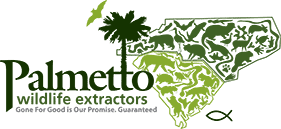The gopher frog of the family of true frogs, referred to as “Ranidae”. Close relatives of this particular frog include the leopard frog, bullfrog, and the bronze frog.
In the State of South Carolina, the gopher frog has been identified as being “endangered” and is under protection by the Endangered Species Act.
There is currently a project in place that has a goal of rebuilding the population of gopher frogs. In this guide, you will learn about gopher frogs and be presented with information about this project.
What Do Carolina Gopher Frogs Look Like?
The Carolina gopher frogs are shaped like a typical frog; however, it is quite plump. Its legs are shorter and they may be either light brown or dark brown. There is a large amount of blotching on the body and numerous warts. It resembles the toad more than a regular frog. It may grow anywhere from a little over 2 inches to up to 3.5 inches.
Where Do Carolina Gopher Frogs Live?
Gopher frogs in the State of Carolina are typically found in the entire area of the Coastal Plain. They have been identified in the following counties:
- Aiken
- Bamberg
- Barnwell
- Berkeley
- Charleston
- Dorchester
- Hampton
- Orangeburg
Today, it is believed that the gopher frog only exists on the following properties:
- Francis Marion National Forest
- Santee Coastal Reserve
- Savannah River Site
What Is the Natural Habitat of Gopher Frogs?
The Carolina gopher frogs typically live in and breed in areas that are isolated. They prefer freshwater wetlands. Examples include bays, flatwood ponds, and lime sinks. They are known to go underground as adults.
It is not at all uncommon to find the creatures in root channels, crayfish holes, and other structures that are subterranean in nature. During the winter, they will relocate to breeding ponds for the purpose and intent of laying eggs.
Once the eggs hatch, they live in the water as larva. When the metamorphosis takes place, they move away from the pond until they reach reproductive maturity.
What Threatens the Gopher Frog Species?
Common threats to the Carolina gopher frog include the draining and filling of wetlands, converting wetlands, forest fires, commercial development, and residential development.
How Is the Population Being Rebuilt?
The South Carolina Department of Natural Resources and the Riverbanks Zoo are working together to increase the gopher frog population. The zoo is collecting egg masses from a breeding wetland and then taking those eggs back to the zoo.
They are being cared for until they go through the transformation of becoming a frog. The zoo is then taking those frogs back into the wild and releasing them. By keeping them until they are no longer vulnerable, they have an increased chance of survival once released back into the wild.
Wildlife Assistance
While it is not likely you will see gopher frogs on your property anytime soon, it is important to be careful if you do. Eventually – as these frogs reproduce – they will make their way into commercial and residential areas.
It is important that you do all that you are able to in order to protect the species. If – for some reason – they become burdensome, contact us today at Palmetto Wildlife Extractors so that we may relocate them to their natural habitat by calling: 855-465-1088

